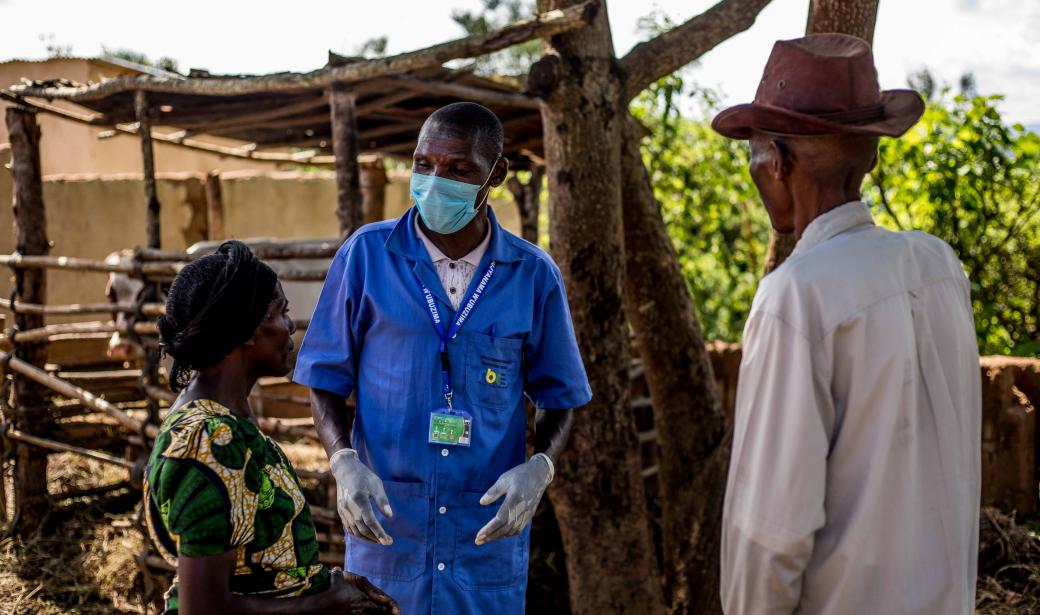Rwanda is in the grip of a deadly Marburg virus outbreak, with an 11th confirmed death. Since the first case was detected in late September, 27 people have been infected. The outbreak, although currently contained to a few regions, is worrying because of its mortality rate of almost 90% , ominously reminiscent of the Ebola virus. Health authorities have taken drastic preventive measures, but a general lockdown has not yet been decided. The specter of a major health crisis nevertheless looms over the country.
Marburg, the shadow of Ebola hovers
Marburg, a close cousin of the infamous Ebola virus, is a highly contagious filovirus, transmitted through bodily fluids and close contact. Symptoms, also similar, include hemorrhagic fevers, vomiting and severe diarrhea, accompanied by rapid systemic shock. While rapid treatment is a key factor for survival, health infrastructures, often overwhelmed in African countries affected by this type of epidemic, are rarely able to manage a massive influx of patients.
Marburg’s alarming mortality rate – around 88% – makes this epidemic particularly feared. Since the early hours of the epidemic, Rwandan authorities have been working with the World Health Organization (WHO) and the Africa Centers for Disease Control and Prevention (Africa CDC) to stem the spread. However, with 11 deaths out of 27 cases recorded, the effectiveness of the measures is still widely questioned.
Intensified prevention measures
East Africa, no stranger to health crises, is trying to learn from past outbreaks, including the Ebola outbreak in West Africa that ravaged countries such as Sierra Leone and Liberia between 2014 and 2016. However, the challenge remains immense. The Rwandan government has stepped up its awareness campaigns in affected areas. Health teams are crisscrossing communities to identify and isolate potential new cases, but the difficulty of the task lies in the rapid and often devastating nature of the disease.
Targeted quarantines are being implemented to limit the spread in the worst-hit areas, while more than 200 people who had contact with the victims are being closely monitored. However, no national lockdown has been imposed, likely due to fears of the economic and social repercussions such a lockdown could have. Authorities are counting on the cooperation of local populations to follow the guidelines and limit the risks.
An international community on the lookout
Rwanda, despite an initial response deemed appropriate, remains under high international surveillance. The country's proximity to the Democratic Republic of Congo (DRC), where Ebola outbreaks had recently been declared, worries experts. Porous borders, combined with population mobility, could worsen the situation, especially since local medical infrastructure is already struggling to manage current cases.
WHO and other health agencies have mobilized resources not only to support Rwandan medical staff, but also to conduct field research to better understand the spread of the virus and prevent further outbreaks. Currently, there is no specific treatment for Marburg, so efforts are focused on symptomatic treatment and patient support.
Regional response and challenges ahead
Outbreaks of viruses such as Marburg and Ebola in the region highlight the fragility of health systems in Central and East Africa. Despite ongoing efforts to strengthen local capacities, shortages of personnel, medicines and medical equipment remain major obstacles to effective crisis management. In addition, the lack of resources for research and development of vaccines or specific treatments further complicates the fight against this type of disease.
While the outbreak has not yet reached devastating proportions, experts fear that mismanagement or delayed response could lead to rapid and uncontrollable spread. Vigilance therefore remains essential, not only for Rwanda, but for the entire region, which is facing a persistent and potentially devastating health threat.




Leave a comment
This site is protected by hCaptcha and the hCaptcha Privacy Policy and Terms of Service apply.